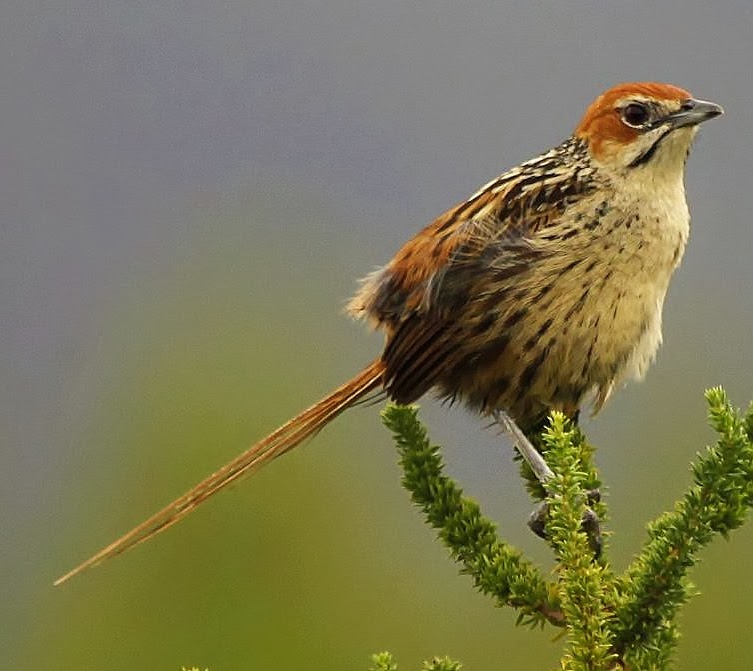 |
| Photo by Carmelo López (Internet Bird Collection) |
Common name:
Cape grass-warbler (en); felosa-do-Cabo (pt); sphénoèque du Cap (fr); yerbera de El Cabo (es); Kapgrassänger (de)
Taxonomy:
Order Passeriformes
Family Sylviidae
Range:
This species is found in southern eastern and north-eastern South Africa and also along the border between Zimbabwe and Mozambique.
Size:
These birds are 17-19 cm long and weigh 30 g.
Habitat:
The Cape grass-warbler is mostly found in high-altitude grasslands, but also uses fynbos scrublands and the edges of mountain forests.
Diet:
They forage mostly on the ground beneath vegetation, taking insects such as beetles, grasshoppers and caterpillars.
Breeding:
Cape grass-warblers breed in July-April, varying between different parts of their range. The nest is built by the female, consisting of a bowl made of twigs, grass blades and leaves, and lined with finer plant material. It is typically concealed near the ground in a tussock of grass or in some tangled vegetation. The female lays 2-3 eggs, which she incubates alone for 14-8 days. The chicks are fed by both parents and fledge 14-16 days after hatching.
Conservation:
IUCN status – LC (Least Concern)
This species has a large breeding range and is described as locally common. The population is suspected to be in decline owing to ongoing habitat destruction, but it is not considered threatened at present.







